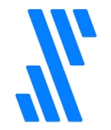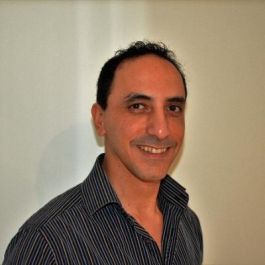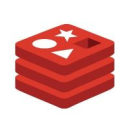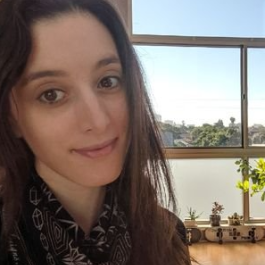Startups are a lot less like snowflakes than founders might think. Yes, their technology, mission and teams may differ, but they go through similar growth patterns and tend to focus their cultures around a shared set of industry values. Jacqui Manzi would know.
Manzi has a decade of startup experience and is currently an engineering manager at Mux. Even though she has been a part of many small teams with big dreams, Manzi said that what she’s helped build at Mux is “truly unique” for two reasons.
“First, we’re collaborative and methodical about our team’s initiatives from conception through development,” Manzi said. “Second, and arguably most valuable, is the emphasis on dedicated space to focus.”
Despite being saturated with startups, the Bay Area still has many tech companies with the power to surprise even the most seasoned engineers, whether that’s because of the exciting projects they’re working on or their unique cultures. Continue reading to learn more about the tech and projects that excite engineers at eight local companies along with what makes they find so awesome about their teams.
And oh, did we mention that all of these companies are hiring engineers now?
What they do: Zoom’s video meeting and conferencing software is designed to connect people, whether it’s two friends catching up, a team of colleagues meeting to discuss a project or hundreds of conference attendees.
Zoom’s tech stack: “TypeScript and React are our main tools for front-end development and web user experience,” Zamites said. “We use Node.js for middleware. React is my favorite because it’s easy to use and the barrier to entry is low, which means the whole team can get up to speed quickly. React also embraces functional programming principles and paradigms, which the front end is moving toward as an industry. It makes organizing code easy and lends itself well to user interfaces.”
Debate and disagreement encouraged: “Most people’s experience with Zoom is: You click on a Zoom link, the browser opens and authenticates you and then opens the app on your machine. But there’s a way to use Zoom in a browser that not many people know about. It’s useful for companies that don’t want or can’t have native apps on their machines. Feature parity between the native apps and the browser version is the goal.”
“I like that there is a lot of debate and healthy disagreement in the team about how to move forward on this project. I am expected to have an opinion and share that opinion with the group to steer the direction of the project.”
What makes Zamites’s team unique: “If you have an opinion about anything — user experience, project direction, something technical — it’s well-received in our Zoom tech community. I haven’t heard any organizational excuses about why we can’t do something. Whether or not we implement or build something is solely based on substantive disagreement, backed by data and what is best for the end user.”
“Here, people aren’t married to their past decisions and are open to new paths. It’s all about what’s best for the customer and delivering happiness, not who is right or wrong. People let the data speak for itself.”
What they do: Instead of companies taking the time to connect disparate sources of data to a single repository, Fivetran has a better idea: automate the process. The company has developed connectors that enable teams to automatically pull and analyze data from over 150 sources — including Salesforce, MongoDB and GitHub — and store it in a single warehouse.
Fivetran’s tech stack: “I am part of the database connector team and primarily leverage MySQL and DynamoDB,” Deb said. “At the moment I am working on adding Elasticsearch into the suite as well. In our day-to-day build and dev environment we use Git, IntelliJ IDEA, Docker, Height and Slack. Our build is based on Bazel. We use New Relic for capturing different usage and performance metrics and BigQuery data for our latest ML initiatives.”
Learning on the job: “At present I am working on a couple of interesting projects, like adding a new connector for Elasticsearch. The best part is that I can apply the learnings from other connectors and incorporate those in the beginning while designing, in addition to learning a new technology in depth. Building tools that can automate debugging is something I am very interested in as it can save us a lot of customer support time, which we can utilize on new developments.”
What makes Deb’s team unique: “I am very fortunate to be part of a team made up not only of great engineers but also excellent team players. Any challenge is less challenging when you have a great team to back you up. Our team embraces some short-term pains in favor of long-term gains and rejects Band-Aid code fixes. We spend time fixing the real causes of issues, which has helped us a lot in the past year.”
What they do: Data is in high-demand these days, and Redis’ open-source in-memory database makes it possible for organizations like Microsoft, MasterCard and FedEx to access it in real time, as in less than milliseconds.
Redis’ tech stack: “We use Kubernetes quite a bit to deploy our solution. Kubernetes, whether it’s on-premises or in the cloud, is definitely one of my favorite technologies that we leverage. It gives us a lot of flexibility and really makes it easy to scale and deploy our software platform.”
A tool box full of tech: “My most interesting and challenging project deployment involves one of the largest banks in the world. We’re helping them adopt Redis Enterprise, not just for caching, but as a database and a microservices communication platform. What I like most about it are the sheer number of technologies we’re working with: microservices communication, messaging, caching and reference data.”
What makes Mankerious’s team unique: “We have a wide range of skills and backgrounds, which makes it very easy to learn from others and leverage their expertise. For example, some of our team members have a graph database background — which I don’t — so it makes it really easy to pick their brains and ask for advice. I have more of a cloud analytics and big data type of background, so in return they can reach out to me for help there and we can collaborate. While it’s always good to have some level of competition, I find that there’s a lot of collaboration, which makes it very easy to learn the product and be successful.”
What they do: RingCentral’s cloud-based communications platform enables businesses to both connect with customers and their team through video chats, phone calls and messaging.
RingCentral’s tech stack: “Our stack is based on JavaScript and TypeScript technologies,” Pardo said. “Our services, APIs and libraries are developed with Node.js, utilizing data streaming technologies like Kafka and storing data in NoSQL databases. We use GitLab for code collaboration, version control and automation of our codebase, Jira for managing engineering tasks and Confluence for documentation. We use the ELK stack to store and monitor logs from our infrastructure.”
Work that reaches millions: “We are currently working on migrating a core library from an old version to the newest version. Since this is a core library, we are working hand in hand with QA to make sure things function as expected. We have to make sure the migration doesn’t interrupt any existing functionality or behavior. Ensuring this migration is backward compatible with our older legacy versions is important.”
“These challenges keep our team engaged and give us the opportunity to be innovative as we solve problems to scale and support our business. I enjoy knowing this project carries significance and that I am trusted and empowered to succeed.”
What makes Pardo’s team unique: “Our culture. My teammates push each other to reach their fullest potential. We are supported by our leaders and empowered to do our best work. The best part is we have fun doing it. Our team follows a functional and test-driven programming paradigm. Every other week we host functional programming and TDD workshops to further enhance our skills. We also run the ‘nerdy book club,’ which allows us to broaden our awareness in a large range of subjects.”
What they do: The RealReal is an online consignment shop for luxury clothing and accessories. The company’s in-house team of experts verify the authenticity of each item on the shop to ensure consumers get exactly what they pay for.
The RealReal’s tech stack: The RealReal’s tech stack includes several languages, libraries and frameworks that most devs will find familiar. MySQL and Postgres are used to wrangle data while the company works with both the Ruby on Rails and TensorFlow frameworks. Rounding out its stacks are Elixir, Python and Ruby along with jQuery and React.
Their culture: The RealReal values being agile, collaboration and using cutting-edge tech. This is reflected in the words of a systems engineer, who told Built In about collaboration within the company.
“Management and staffers do a great job engaging with each other in a constructive and positive manner when in team situations. Innovation with our technology architecture is highly encouraged by management, which removes any monolithic design and implementation.”
What they do: Mux is on a mission to make video easier for developers. More specifically, the company’s API-first platform takes the legwork out of video encoding, streaming, monitoring, and more.
Mux’s tech stack: “Working on Mux’s core platform experience gives my team an opportunity to leverage several different technologies,” Manzi said. “We use multiple databases to store information about accounts, products and application state, including PostgreSQL, Redis, ClickHouse and CockroachDB. We rely on Elixir and the Phoenix framework to scale and maintain our API layer and develop our dashboard and user interface with JavaScript, TypeScript and React.”
Internal and external stakeholders: “My team is responsible for creating a unified experience for users, which covers everything from account authentication and authorization to onboarding, dashboard notifications, billing and invoicing. I love my role in developing the core platform experience. One of the most interesting projects my team is working on right now is unifying the customer experience around authentication and authorization for API tokens, signing keys and single sign-on. We’re tackling technical design challenges to ensure these security functions streamline the experience for developers, and it’s really rewarding to know that the work we’re doing is going to have a positive, tangible impact on our customers.”
What makes Manzi’s team unique: “I have a decade of startup experience and have been fortunate to be part of amazing teams and cultures. But what we’ve built at Mux is truly unique. First, we’re collaborative and methodical about our team’s initiatives from conception through development. Projects go through a technical design process structured to help us thoroughly understand the objectives and identify possible solutions before work begins. This research is then reviewed by the wider engineering organization, which allows valuable information and learnings to be shared across teams.”
“Second, and arguably most valuable, is the emphasis on dedicated space to focus. With company-wide participation, focus periods allow everyone to be intentional about how we spend our time.”
What they do: Clover Network creates hardware and software designed to help small and medium-sized businesses up their payment game. Its open-architecture point-of-sale technology includes handheld devices, tablet-based systems and online payment solutions.
Clover Network’s tech stack: “Clover’s solutions can be categorized into three major platforms: point-of-sale or POS device platform, omni-commerce gateway and the unified merchants portal,” Kagalkar said. “Clover engineering designs our hardware using the highly customizable Android operating system, which is integrated with the secure payment element. The secure payment element is powered using OpenRTOS and runs payment kernels and cryptographic functions. Our device platform is PCI/PTS, P2PE and EMVCo certified and supports contact, contactless, MSR and QR code payments. The device platform software is developed using C, Java on Android and Linux, and OpenRTOS platforms.”
Moving to microservices: “The main focus of my team has been to re-architect and build a unified device and payment platform so the same code base and architecture can be used to build POS terminals for various form factors, verticals and geographic regions. Clover’s payment infrastructure serves payment requests from POS devices, third party and ISV applications, and e-commerce clients. Traditionally, payment services were part of monolithic services. The team has been working on decomposing payment components out of the monolithic codebase and moving to microservices. With microservices and active-active multi-region architecture, we can increase the high availability of payment services for merchants.”
What makes Vinayak’s team unique: “The Clover engineering team is relatively small but highly productive and consists of professionals in various domains, including embedded systems, electrical and mechanical engineers, security and crypto, and DevOps. Clover is an engineering-driven company, and many of our products and enhancements were initiated by engineers during hackathons and engineering exploration. Our workforce is made up of people of different ages, races, religions, nationalities, sexual orientations and genders, which brings diverse viewpoints and perspectives to the company.”
What they do: SentinelOne is a cybersecurity company whose AI-powered platform provides solutions for threat detection, hunting and response. The platform is designed to provide complete enterprise protection, from the machines employees work on to the cloud environments they work in and the IoT devices they leverage.
SentinelOne’s tech stack: The SentinelOne tech is extensive and includes many coding languages, DevOps tools and cloud environments. That said, some of their currently open roles call for expertise in C and C++, Java, Kubernetes, Jenkins and Python. SentinelOne does a lot of work in the cloud and makes use of the big three cloud computing providers: AWS, GCP and Microsoft Azure.
Their culture: Although cybersecurity is a very serious industry, SentinelOne does its best to not make engineers feel like they’re working inside of a pressure cooker. This is according to Denise Schlesinger, senior director of R&D. In an interview with the SentinelOne blog, Schlesinger detailed her approach to leadership, one that’s predicated on making employees feel safe and helping them reach their full potential.
“I lead by example and I love understanding the small details that make the big picture,” Schlesinger told the SentinelOne blog. “I like the challenge of simplifying complex systems. Enabling my teams to grow by granting autonomy, I create a safe environment with permission to fail. I truly care for them and understand the strengths of each person and do my best to enable him/her to thrive.”














